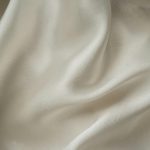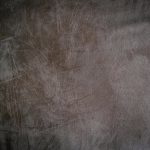I've always been curious about how to spot a real linen shirt. It's not just about looking at the label—there's more to it. You've got to get up close and personal, checking out the weave for those telltale signs like slight irregularities and the unique texture that feels a bit rough to the touch. And don't get me started on the burn test; it's a whole adventure on its own. But why does it matter, you ask? Well, there's something special about linen that other fabrics just can't match, and I think it's worth knowing how to identify the real deal. Let's just say, there's a bit of an art to it.
Table of Contents
Key Takeaways
- Inspect the weave for a loose, slightly irregular pattern with knots and nubs, indicative of linen's authenticity.
- Feel the texture, noting linen's roughness and natural slubs, distinguishing it from smoother materials like cotton.
- Look for natural color variations in the fabric, a characteristic feature stemming from the flax plant.
- Read the shirt's label for indications of "100% linen" or "flax" to confirm its authenticity.
- Conduct a burn test; linen burns quickly, leaving fine ash and emitting a wood-like odor, unlike cotton.
Inspecting the Weave
When checking a shirt's material, I first look at its weave, since linen's got that unique, loose, and slightly irregular pattern that sets it apart. You know, linen fabric isn't shy about showing off its texture. It's like it wears its imperfections as badges of honor. Those little knots and nubs, the slubs, they're not defects. They're signs you're getting the real deal, an authentic piece that screams quality and natural vibe.
The thing about linen's weave is it's not just about looks; it's heavier and stiffer compared to your run-of-the-mill cotton. This doesn't mean it's uncomfortable; far from it. It's just that linen feels more substantial. When I pick up a linen shirt, I can almost immediately tell by the weight and the way it holds itself. It's got this organic look that's hard to replicate with other fabrics.
Assessing the Texture
After inspecting the weave, I quickly move on to feeling the fabric, noting how linen's rough and textured touch sets it apart from smoother materials like cotton. There's something unmistakably distinct about linen's texture; it's heavier, stiffer, and you can really feel the natural variations. Unlike cotton, which tends to be uniform and soft to the touch, linen announces its presence with a roughness that's quite unique.
When you run your fingers across a linen shirt, you might notice little knots or thicker threads. These are called slubs, and they're not flaws. In fact, they're like linen's signature, telling you you've got the real deal. These slubs are a result of the natural variations in the linen fibers, something you won't find in cotton shirts.
The coarser feel of linen mightn't be everyone's cup of tea initially, but it's a hallmark of the fabric's natural and unprocessed charm. This texture, this roughness, isn't just about aesthetics; it's about authenticity. Linen's tactile quality, with its slubs and variations, really sets it apart, making it easy to distinguish from cotton once you know what to feel for.
Identifying Color Variations
Moving from texture to color, it's clear that linen shirts often showcase natural color variations, like a subtle pale yellowish-gray, that add to their unique character. Seeing these variations isn't just about spotting a different hue here and there; it's about recognizing the story of the shirt. These color variations stem from the flax plant, the source of linen, and they contribute to the fabric's organic appearance. It's as if each thread holds a bit of the plant's life within it, presenting a palette that's both understated and full of depth.
When I'm on the hunt for a genuine linen shirt, I look for these muted, natural color variations. Unlike other fabrics that boast uniformity, linen wears its heart on its sleeve – or rather, its entire body. This isn't to say every linen shirt will scream its identity through color alone, but those slight, often hard-to-spot variations are like secret handshakes; they signal the presence of linen's unique texture and rustic charm.
To me, these irregularities aren't flaws. They're signs of authenticity, markers of a material that prides itself not just on its natural origins, but on how those origins contribute to a look that's effortlessly elegant and earthy.
Reading the Label
Peeling back the fabric's story further, I always make a beeline for the shirt's label to confirm it's genuine linen. It's like uncovering a secret; that little tag tucked away at the side or neck of the shirt holds the key to the material's identity. Spotting '100% linen' or 'flax' on it makes my heart skip a beat. It's the hallmark of authenticity, telling me that the shirt comes from the esteemed flax plant, known for its natural, breathable fibers.
But here's the deal, not all labels make it that easy. Sometimes, you've got to dig a bit deeper, check those care instructions. Special linen care requirements? Bingo, you're probably holding a piece of natural luxury. These labels are gold mines for confirming you've got linen in your hands, differentiating it from other natural fibers.
Remember though, an absence of linen indication might hint you're dealing with an imposter. So, reading that label isn't just a step—it's your secret weapon in distinguishing the real deal from a lineup of wannabes. Trust me, once you've got it down, you'll feel like a linen connoisseur, fluent in the language of labels.
Conducting a Burn Test
Diving into a more hands-on approach, I often turn to the burn test to see if I'm dealing with real linen. It's like playing detective, but with fabrics. When you're trying to identify linen, knowing it's made from flax fibers is a good start, but seeing how the fabric behaves under fire? That's where the real clues come in.
Here's a quick guide I put together to make sense of the burn test:
| Fabric | Burn Test Outcome |
|---|---|
| Linen | Burns quickly, fine ash, wood odor |
| Cotton | Burns, different smell and residue |
By comparing how a fabric burns to these outcomes, I can usually tell if the fabric is woven from the flax fibers that make up linen or something else. Linen fabric has this unique way of turning into fine ash with a somewhat comforting wood odor, unlike cotton fabric, which just doesn't give off the same vibes.
Conducting a burn test isn't just about playing with fire; it's about understanding the subtle differences in how fabric is made. And when you're after the real deal in linen, those differences matter big time.
Frequently Asked Questions
How Can You Tell if Something Is 100% Linen?
I'd check the label for "100% linen" or "flax," feel for a rough texture, and look for natural color and slubs. A burn test, where it smells like burning paper, confirms it's real linen.
How Can You Tell the Difference Between Linen and Cotton Fabric?
I can tell the difference by feeling the texture; linen's heavier and rougher than cotton. I also look for irregular weaves or slubs. Finally, checking the label for "100% linen" is a dead giveaway.
How Can You Tell the Difference Between Real Linen and Fake Linen?
I check the weave and look for slubs to spot real linen. It feels heavier and stiffer too. The label's a big clue, saying "100% linen" or "flax." Real linen's colors seem more natural.
What Are the Characteristics of a Linen Shirt?
I'd say a linen shirt's got a rough texture, wrinkles easily, and feels light. It's typically in natural colors and has a plain weave. You'll notice it's sturdy, durable, and really absorbs moisture well.
- Should You Use Dryer Sheets on Percale Sheets? A Care Guide - July 14, 2025
- What Are Percale Sheets Made Out Of? A Look at Fibers and Weaves - July 14, 2025
- Are My Pillow Percale Sheets 100% Cotton? A Product Fact-Check - July 14, 2025







